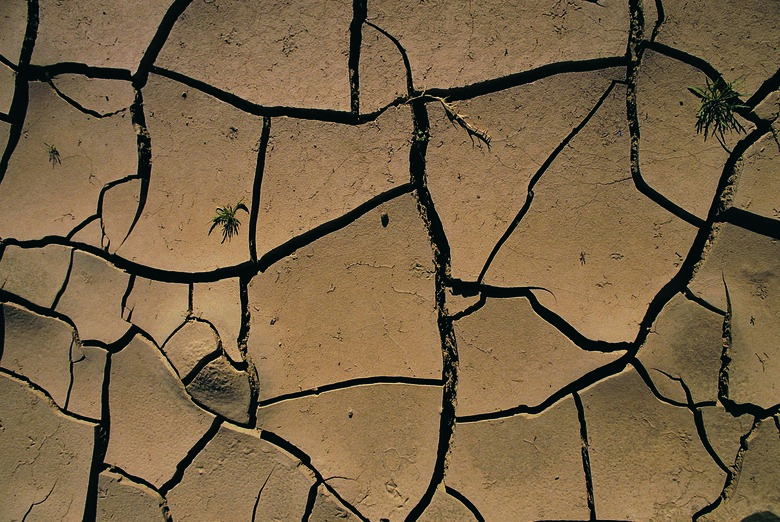What Is Red Clay?
Weathering or decomposition of rock produces clay. Rain, wind, earthquakes, volcanic eruptions and other physical and chemical processes all cause weathering in one form or another. All rocks contain minerals, and when rocks containing iron oxides weather, they produce red clay. Granite and basalt are examples of rocks containing iron oxides. Red clay consists of very fine particles that are more than 1,000 times smaller than grains of sand.
Clay Composition
Clay Composition
Clay particles contain silica (SiO2) and a mixture of other minerals, such as quartz, carbonate, aluminum oxides and iron oxides. The ratio of SiO2 to other clay minerals within clay determines clay type. Continued weathering of clay causes leaching of minerals, such as sodium, potassium, calcium and carbonate, but iron and aluminum oxides are more stable and less likely to leach out. Highly weathered clay deposits contain mostly aluminum or iron oxides, the minerals in red clay.
Clay Properties
Clay Properties
Minerals in clay particles strongly attract water, causing particles to expand and contract in response to wet and dry conditions and temperature changes. When particles become hydrated in wet conditions, they can double in size. Buildings that are constructed on clay may suffer structural damage caused by seasonal swelling of clay. On the positive side, the oxides in clay, including red clay, also act like glue, holding soil particles together, and are useful for lining ponds and water basins.
Clay minerals also produce a charge on clay particles, causing the attraction of other ions — charged molecules in solution — such as pesticides and contaminants. For vegetable gardening and crop production, retention of pesticides and contaminants in clay soils could be a serious problem.
Red Clay Distribution
Red Clay Distribution
Red clay soils, called ultisols, are the dominant soils in the southeastern United States, and make up about 8.1 percent of the ice-free land around the globe. These soils are found mostly in humid temperate and tropical regions. Partly due to climate conditions, calcium, magnesium and potassium have leached out of these red clay soils, causing the soils to be of low fertility. Supplementation with organic matter and fertilizer, however, can easily restore the fertility of ultisols.
Red Clay Uses
Red Clay Uses
The use of red clay has a long history in pigments for painting. Today, some of the clay iron oxide pigments have been replaced by synthetic compounds. Because water molecules are attracted to clay, a mixture of water and clay makes a mud that can be shaped, dried and fired into pottery and material for industrial uses. Red clay makes terracotta pottery and other types of pottery, but because red clay's iron content melts at lower temperatures than minerals in other types of clay, the strength of red clay products is lower, and industrial uses are usually limited to brick and tile.
Cite This Article
MLA
Blue, Marie-Luise. "What Is Red Clay?" sciencing.com, https://www.sciencing.com/red-clay-22940/. 24 April 2017.
APA
Blue, Marie-Luise. (2017, April 24). What Is Red Clay?. sciencing.com. Retrieved from https://www.sciencing.com/red-clay-22940/
Chicago
Blue, Marie-Luise. What Is Red Clay? last modified March 24, 2022. https://www.sciencing.com/red-clay-22940/
